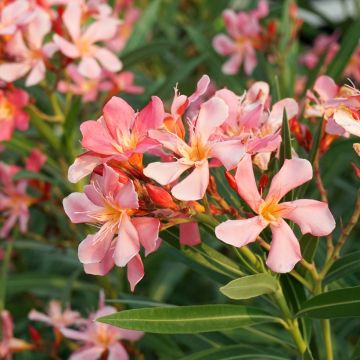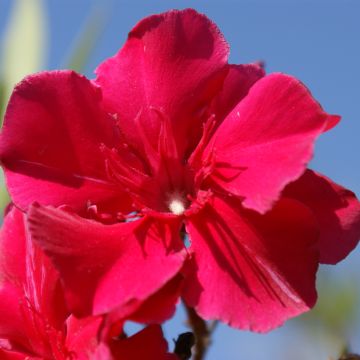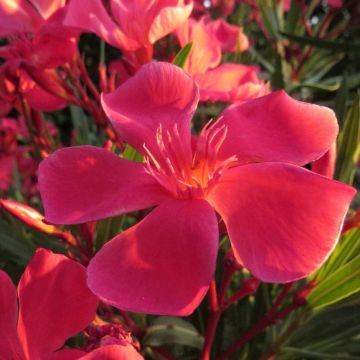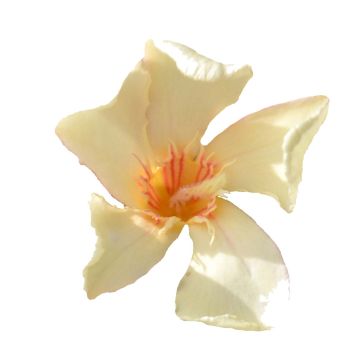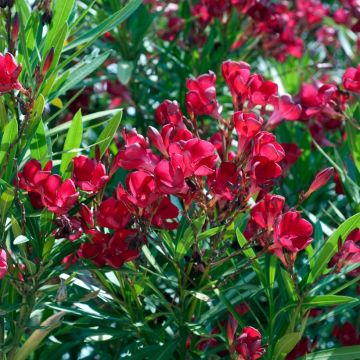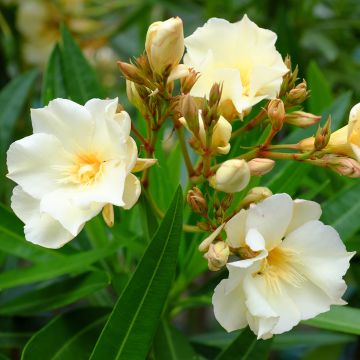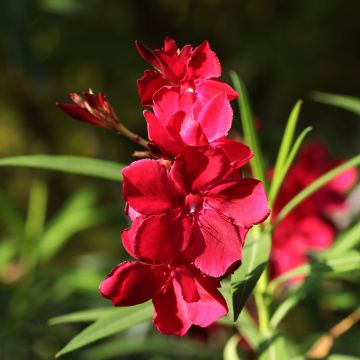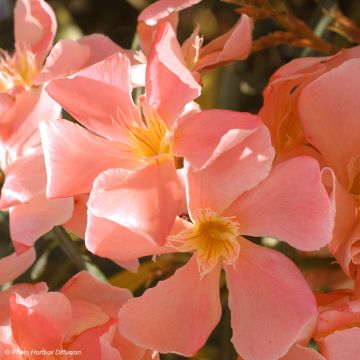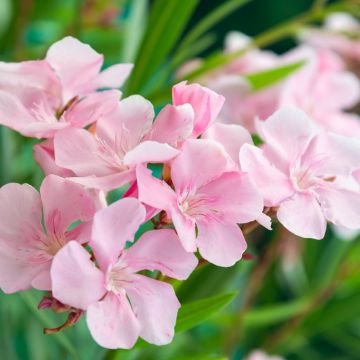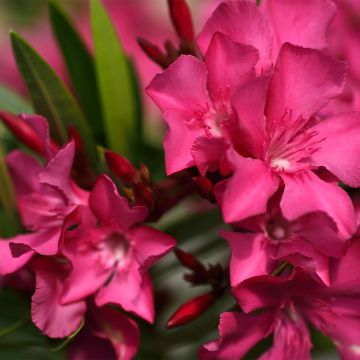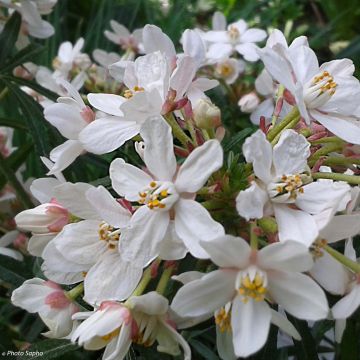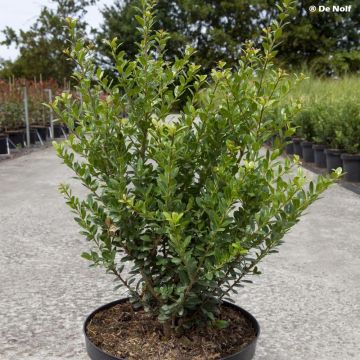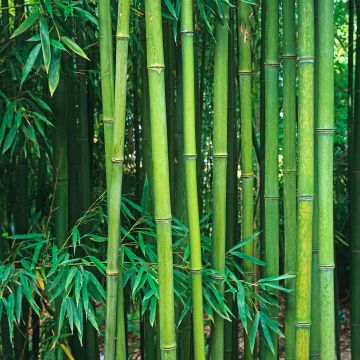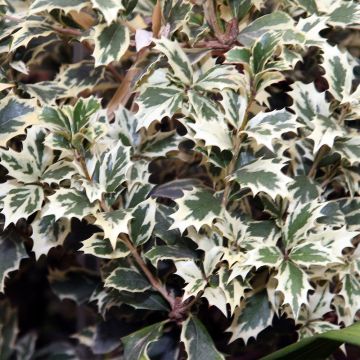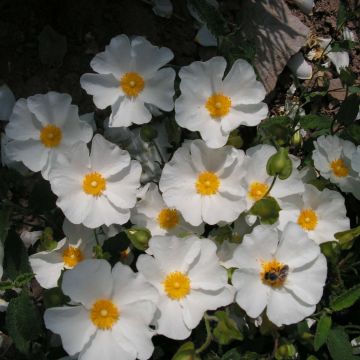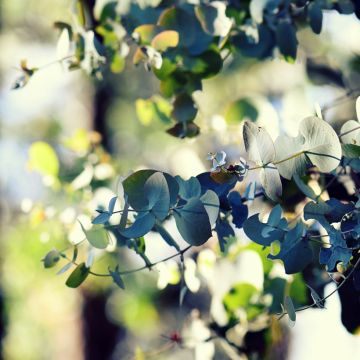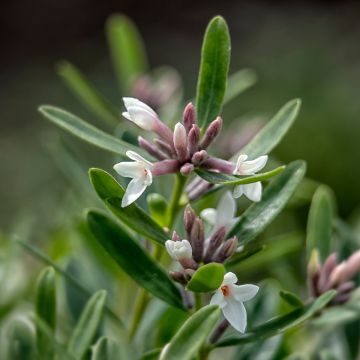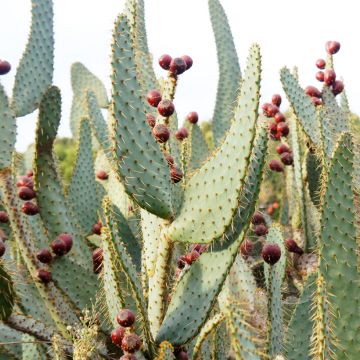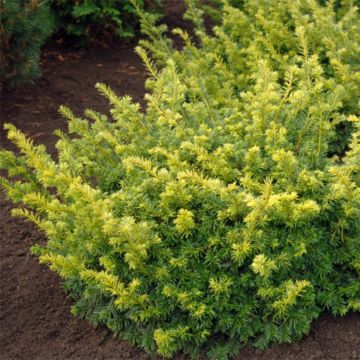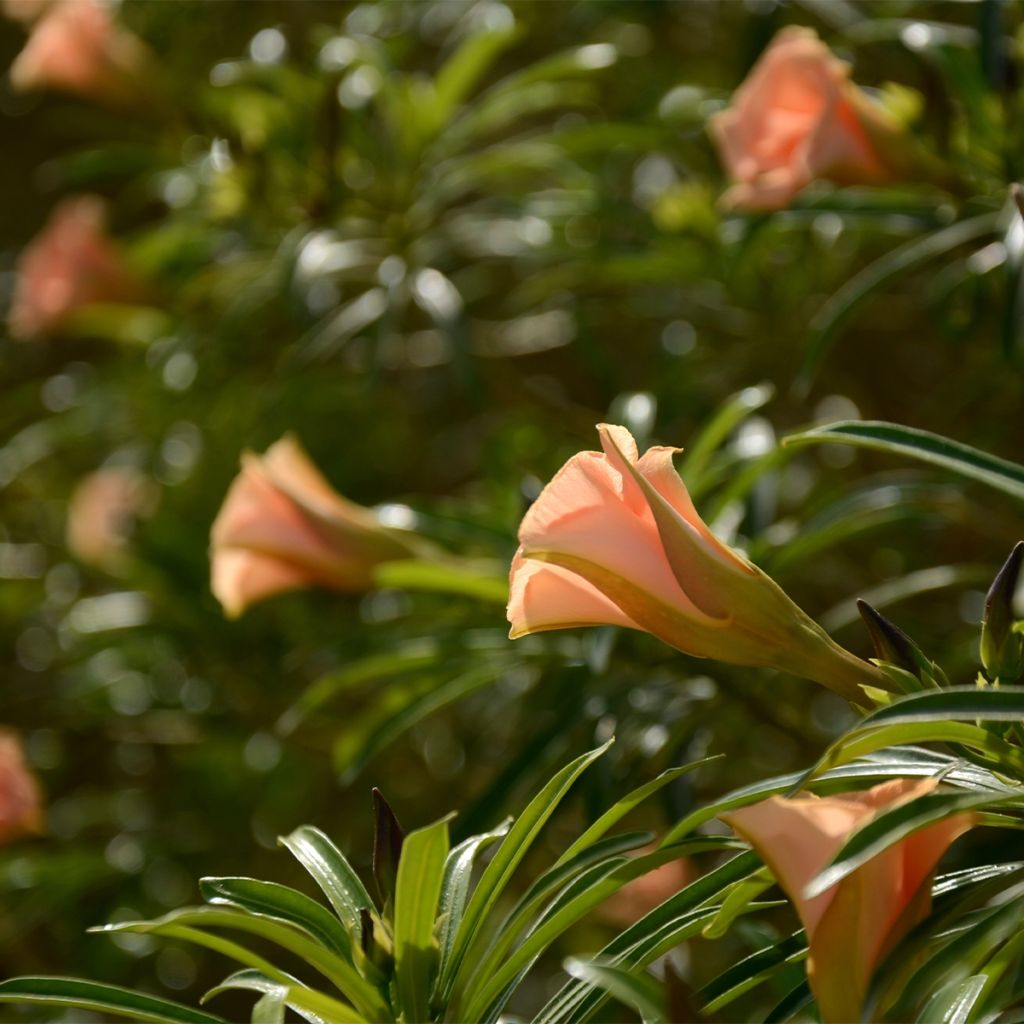

Thevetia peruviana - Thévétia du Pérou ou Laurier jaune
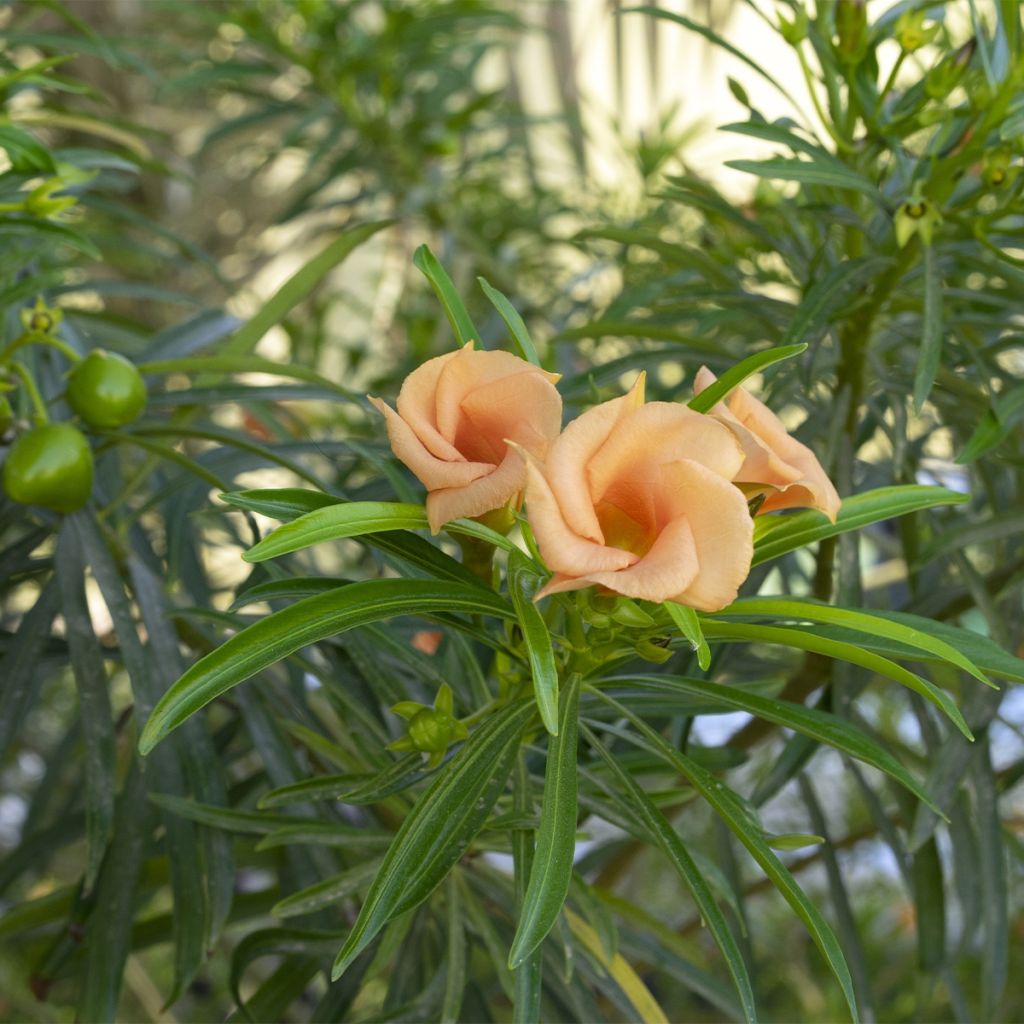

Thevetia peruviana - Thévétia du Pérou ou Laurier jaune
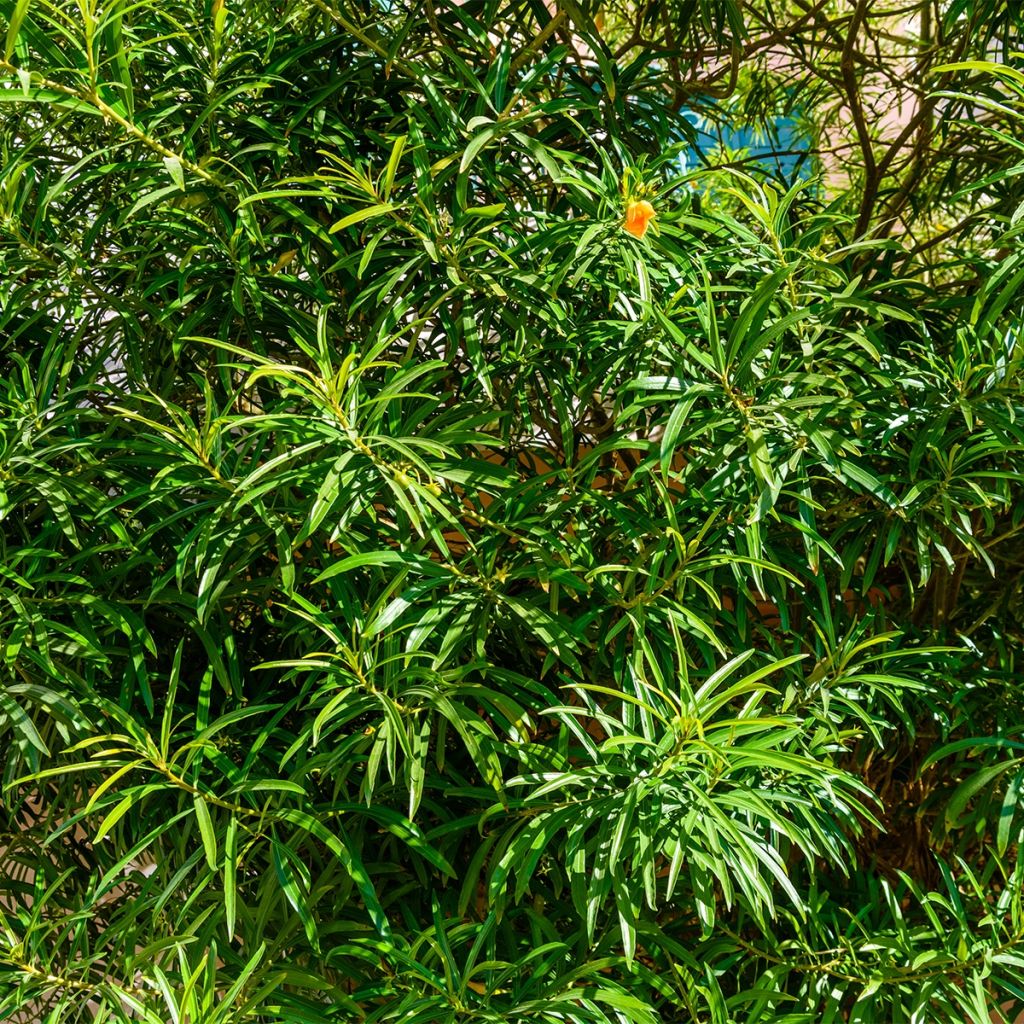

Thevetia peruviana - Thévétia du Pérou ou Laurier jaune
Thevetia peruviana
Thevetia peruviana
Yellow Oleander, Lucky Nut, Peruvian Thevetia
This plant carries a 24 months recovery warranty
More information
We guarantee the quality of our plants for a full growing cycle, and will replace at our expense any plant that fails to recover under normal climatic and planting conditions.
Oversize package: home delivery by special carrier from €6.90 per order..
Express home delivery from €8.90.
Delivery to Corse prohibited: UE law prohibits the import of this plant from mainland France to Corse as part of the fight against Xylella fastidiosa. Please accept our sincere apologies.
More information
Does this plant fit my garden?
Set up your Plantfit profile →
Description
The Thevetia peruviana, the Peruvian Thevetia, is a bush from the tropical regions of Central and South America, also known as yellow laurel or yellow oleander due to its resemblance to our oleander (including its toxicity). With a bushy habit, it has an airy silhouette and bears shiny, evergreen foliage that is harmoniously distributed on its stems. It forms a beautiful setting for its very long fragrant flowering in shades of yellow, melon, and apricot. It is best grown in open ground in the most sheltered gardens, where it never freezes. Elsewhere, it can be cultivated in a large pot and makes a beautiful exotic plant to adorn the terrace or balcony during the summer and a veranda maintained at 15-16°C (59-60.8°F) in winter.
The Thevetia peruviana (synonym Cascabela thevetia) is an evergreen bush from the family Apocynaceae, just like periwinkles or star jasmine (Trachelospermum jasminoides). Like many plants in this family, it is toxic when ingested and the latex it contains can cause skin irritations. In the Caribbean, it is called "Bois à lait" because of the white latex that flows from broken branches or leaves. The origins of this yellow laurel can be found in the tropical regions of America, from northern Mexico to northeastern Argentina. The plant grows in areas where temperatures range from 17 to 37 °C (62.6 to 98.6°F), on seasonally moist to dry soils.
The Peruvian Thevetia is a fast-growing shrub with a bushy and airy habit that usually reaches 2m (7ft) in height and 1m (3ft) in width when grown in a pot. Its leaves are elongated, thin, leathery, and measure 8 to 16 cm (3 to 6in) long and 0.5 to 1.5 cm (1in) wide. The upper surface of the lamina is very bright green and glossy. They are arranged in whorls, which means in small groups, on the stems. Flowering usually starts in June and lasts until October. Each flower lasts only one day, but they continuously renew themselves on the plant. The flowers are grouped in 6 to 8 units at the end of the branches. They are slightly trailing, 4 to 6 cm (2in) long, bell-shaped or funnel-shaped. Tubular at the base, they are composed of petals arranged in a spiral. Their color ranges from yellow to orange. This fragrant flowering attracts bees and other pollinators. The fleshy and triangular fruit measures 2.5 to 3.5 cm (1in) long and 2.1 to 4.5 cm (1 to 2in) in diameter. It is red and turns a shiny black color.
The yellow laurel is mainly used as a plant for a conservatory or heated greenhouse that can be taken outside during the summer. It is a rewarding exotic bush, relatively easy to grow as long as it is not exposed to cold temperatures. It will delight enthusiasts of Brugmansias, Tibouchina, Mimosas, and other tropical palms.
Report an error about the product description
Plant habit
Flowering
Foliage
Safety measures
Botanical data
Thevetia
peruviana
Apocynaceae
Yellow Oleander, Lucky Nut, Peruvian Thevetia
South America
Phytophotodermatoses
Cette plante peut provoquer l'apparition de réactions cutanées indésirables en cas de contact suivi d'une exposition au soleil.
Ne la plantez pas là où de jeunes enfants peuvent évoluer. Evitez l'exposition au soleil après l'avoir manipulée. Evitez tout contact avec la peau: privilégiez l'emploi de gants pour la manipuler. En cas de contact, lavez-vous soigneusement les mains et rincez abondamment à l'eau la zone concernée. Lavez les vêtements entrés en contact. En cas de réaction cutanée, contactez votre médecin ou le centre antipoison le plus proche de chez vous. En cas d'atteinte étendue, appelez sans tarder le 15 ou le 112.Pensez à conserver l'étiquette de la plante, à la photographier ou à noter son nom, afin de faciliter le travail des professionnels de santé.
Davantage d'informations sur https://plantes-risque.info
ingestion
Cette plante est toxique si elle est ingérée volontairement ou involontairement.
Ne la plantez pas là où de jeunes enfants peuvent évoluer, et lavez-vous les mains après l'avoir manipulée.
Pensez à conserver l'étiquette de la plante, à la photographier ou à noter son nom, afin de faciliter le travail des professionnels de santé.
Davantage d'informations sur https://plantes-risque.info
Other Nerium - Oleander
Planting and care
We advise planting the yellow laurel in spring, when there is no longer any risk of frost, in a large pot (30 litres). Place it in a very sunny and sheltered position, even in partial shade in hot climates. It appreciates light, well-drained, fairly rich soils. Limestone is not a problem, which makes this bush easy to grow in a pot despite the "hard" water. Its only enemy is the cold: it cannot tolerate frost and should be kept above 15°C (59°F) in winter. On the other hand, very hot summers do not bother it as long as it is regularly watered.
Pruning, when necessary, should be done after flowering. Wear gloves to protect yourself from the white latex which can be irritating. The entire plant is toxic if ingested.
Planting period
Intended location
Care
This item has not been reviewed yet - be the first to leave a review about it.
Evergreen shrubs
Haven't found what you were looking for?
Hardiness is the lowest winter temperature a plant can endure without suffering serious damage or even dying. However, hardiness is affected by location (a sheltered area, such as a patio), protection (winter cover) and soil type (hardiness is improved by well-drained soil).

Photo Sharing Terms & Conditions
In order to encourage gardeners to interact and share their experiences, Promesse de fleurs offers various media enabling content to be uploaded onto its Site - in particular via the ‘Photo sharing’ module.
The User agrees to refrain from:
- Posting any content that is illegal, prejudicial, insulting, racist, inciteful to hatred, revisionist, contrary to public decency, that infringes on privacy or on the privacy rights of third parties, in particular the publicity rights of persons and goods, intellectual property rights, or the right to privacy.
- Submitting content on behalf of a third party;
- Impersonate the identity of a third party and/or publish any personal information about a third party;
In general, the User undertakes to refrain from any unethical behaviour.
All Content (in particular text, comments, files, images, photos, videos, creative works, etc.), which may be subject to property or intellectual property rights, image or other private rights, shall remain the property of the User, subject to the limited rights granted by the terms of the licence granted by Promesse de fleurs as stated below. Users are at liberty to publish or not to publish such Content on the Site, notably via the ‘Photo Sharing’ facility, and accept that this Content shall be made public and freely accessible, notably on the Internet.
Users further acknowledge, undertake to have ,and guarantee that they hold all necessary rights and permissions to publish such material on the Site, in particular with regard to the legislation in force pertaining to any privacy, property, intellectual property, image, or contractual rights, or rights of any other nature. By publishing such Content on the Site, Users acknowledge accepting full liability as publishers of the Content within the meaning of the law, and grant Promesse de fleurs, free of charge, an inclusive, worldwide licence for the said Content for the entire duration of its publication, including all reproduction, representation, up/downloading, displaying, performing, transmission, and storage rights.
Users also grant permission for their name to be linked to the Content and accept that this link may not always be made available.
By engaging in posting material, Users consent to their Content becoming automatically accessible on the Internet, in particular on other sites and/or blogs and/or web pages of the Promesse de fleurs site, including in particular social pages and the Promesse de fleurs catalogue.
Users may secure the removal of entrusted content free of charge by issuing a simple request via our contact form.
The flowering period indicated on our website applies to countries and regions located in USDA zone 8 (France, the United Kingdom, Ireland, the Netherlands, etc.)
It will vary according to where you live:
- In zones 9 to 10 (Italy, Spain, Greece, etc.), flowering will occur about 2 to 4 weeks earlier.
- In zones 6 to 7 (Germany, Poland, Slovenia, and lower mountainous regions), flowering will be delayed by 2 to 3 weeks.
- In zone 5 (Central Europe, Scandinavia), blooming will be delayed by 3 to 5 weeks.
In temperate climates, pruning of spring-flowering shrubs (forsythia, spireas, etc.) should be done just after flowering.
Pruning of summer-flowering shrubs (Indian Lilac, Perovskia, etc.) can be done in winter or spring.
In cold regions as well as with frost-sensitive plants, avoid pruning too early when severe frosts may still occur.
The planting period indicated on our website applies to countries and regions located in USDA zone 8 (France, United Kingdom, Ireland, Netherlands).
It will vary according to where you live:
- In Mediterranean zones (Marseille, Madrid, Milan, etc.), autumn and winter are the best planting periods.
- In continental zones (Strasbourg, Munich, Vienna, etc.), delay planting by 2 to 3 weeks in spring and bring it forward by 2 to 4 weeks in autumn.
- In mountainous regions (the Alps, Pyrenees, Carpathians, etc.), it is best to plant in late spring (May-June) or late summer (August-September).
The harvesting period indicated on our website applies to countries and regions in USDA zone 8 (France, England, Ireland, the Netherlands).
In colder areas (Scandinavia, Poland, Austria...) fruit and vegetable harvests are likely to be delayed by 3-4 weeks.
In warmer areas (Italy, Spain, Greece, etc.), harvesting will probably take place earlier, depending on weather conditions.
The sowing periods indicated on our website apply to countries and regions within USDA Zone 8 (France, UK, Ireland, Netherlands).
In colder areas (Scandinavia, Poland, Austria...), delay any outdoor sowing by 3-4 weeks, or sow under glass.
In warmer climes (Italy, Spain, Greece, etc.), bring outdoor sowing forward by a few weeks.

































